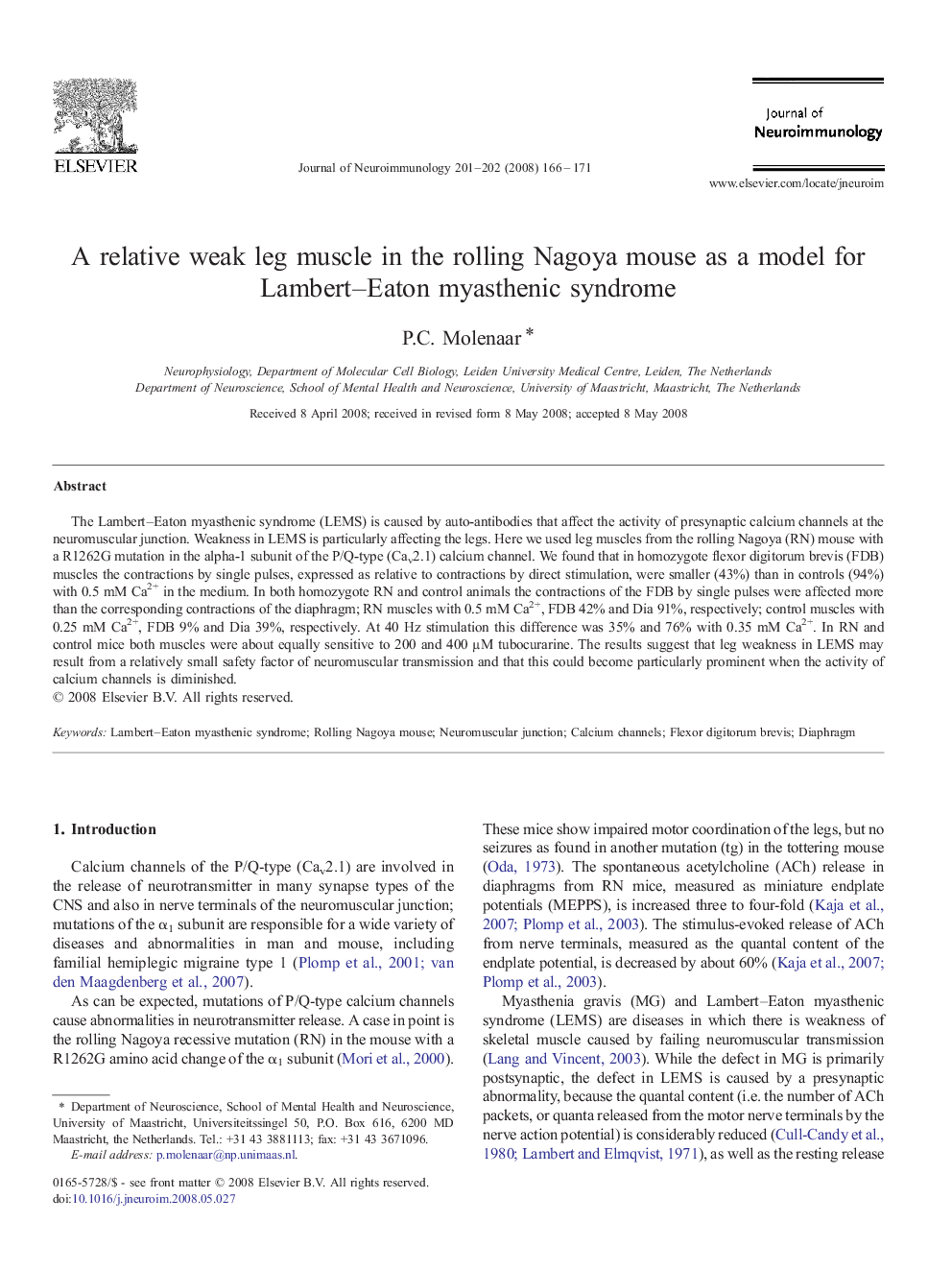| کد مقاله | کد نشریه | سال انتشار | مقاله انگلیسی | نسخه تمام متن |
|---|---|---|---|---|
| 3065175 | 1580470 | 2008 | 6 صفحه PDF | دانلود رایگان |

The Lambert–Eaton myasthenic syndrome (LEMS) is caused by auto-antibodies that affect the activity of presynaptic calcium channels at the neuromuscular junction. Weakness in LEMS is particularly affecting the legs. Here we used leg muscles from the rolling Nagoya (RN) mouse with a R1262G mutation in the alpha-1 subunit of the P/Q-type (Cav2.1) calcium channel. We found that in homozygote flexor digitorum brevis (FDB) muscles the contractions by single pulses, expressed as relative to contractions by direct stimulation, were smaller (43%) than in controls (94%) with 0.5 mM Ca2+ in the medium. In both homozygote RN and control animals the contractions of the FDB by single pulses were affected more than the corresponding contractions of the diaphragm; RN muscles with 0.5 mM Ca2+, FDB 42% and Dia 91%, respectively; control muscles with 0.25 mM Ca2+, FDB 9% and Dia 39%, respectively. At 40 Hz stimulation this difference was 35% and 76% with 0.35 mM Ca2+. In RN and control mice both muscles were about equally sensitive to 200 and 400 µM tubocurarine. The results suggest that leg weakness in LEMS may result from a relatively small safety factor of neuromuscular transmission and that this could become particularly prominent when the activity of calcium channels is diminished.
Journal: Journal of Neuroimmunology - Volumes 201–202, 15 September 2008, Pages 166–171